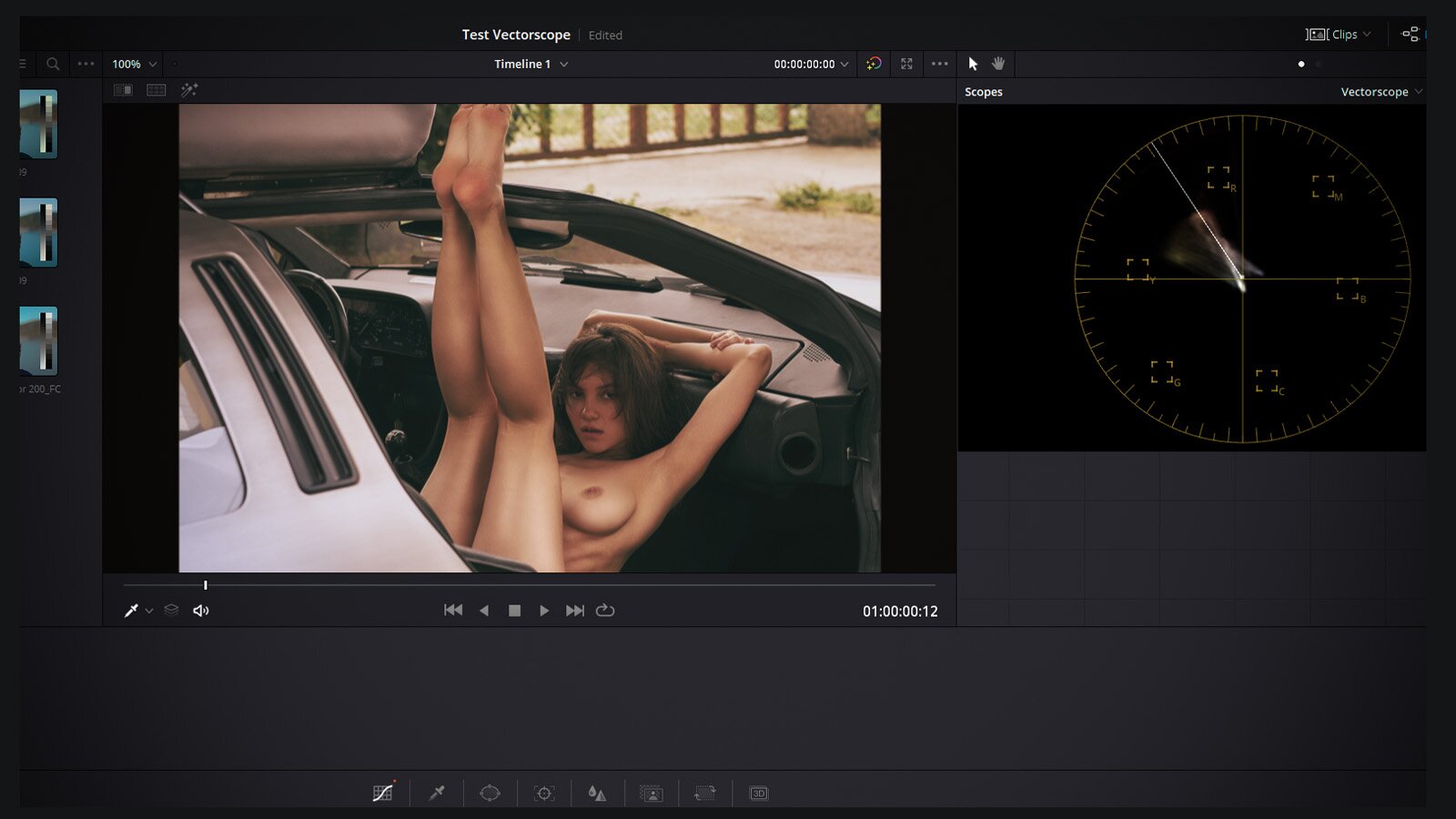They say, humans can identify when something is off with the blue of the sky, the green of nature and the red tone of the skin.
I have some doubts, especially on the greens. If you ever visited Ireland for example. It's so green, it totally looks over-saturated.
But with the skin tones, I agree. If skin is colored too green, a person looks sick. Too yellow looks artificial. And so on. But we all have different monitors, use various displays to view images. So how do you achieve the right tones?
Even though, we are currently celebrating 30 years of Photoshop, the program is still stuck in histograms. But a histogram only shows the amount of color hues and not their saturation. We would need a more three dimensional approach to show all in one scope.
Vectorscope
And there comes the vectorscope. It's the circle that you see in the image above. It shows all color values and their saturation (least saturation is at the center of the circle). I really wonder why this hasn't be integrated in Photoshop yet. Because the vectorscope is accurate and objective even if your monitor is not. Now, comes the best part: Do you see the line a few minutes past 11 o clock? That's the magic skin tone indicator line.
When I first heard about this indicator line, I thought it can't be true. There are different people and different skin tones. But, they are much closer together than you might think. Because skin has no color. What gives skin its color is the blood circulating underneath. And as all humas have red blood, the skin tone line represents the color of red blood under skin. So, this damn line in the vectorscope is a very powerful help.
Unfortunately, as of 2020, it is only available in video editing software. It is used by movie makers to adjust tones from different scenes, because you would immediately recognize when something is off. But, I believe, it would be very powerful for photo editing, too.
Another fun fact that I have learned is that there are no white people vs black people. We are all mid-tone gray people. Caucasian skin is approx. 70% white, while black skin is only about 20% white. But all skin tones are very close to the skin indicator line of the vectorscope.
Of course, you can dig into this way deeper, but the point is: There is a tool out there that helps you easily find out, if your skin tones are good, no matter what screen you're working at or under what light conditions. This is crucial, I would say.
